The rear wheel bearing is one of the components that must be handled with care. A damaged rear wheel bearing may have adverse effects on a vehicle. Therefore, it’s critical to identify the key symptoms of replacing your wheel bearing. The article at hand focuses on some distinct signs of a defective rear wheel bearing, particularly in terms of how and when binding is likely to occur. But first of all, with the help of problem-solving, we will try to give sufficient information to the motorists on how to solve the problem of wheel rotation if such a problem arises. All of this perfectly fits the individual interests of every driver, including ones that are new to it, as well as experienced mechanics. Thus, all the motorists could benefit from this type of informative article.
What are the signs of a bad rear wheel bearing?
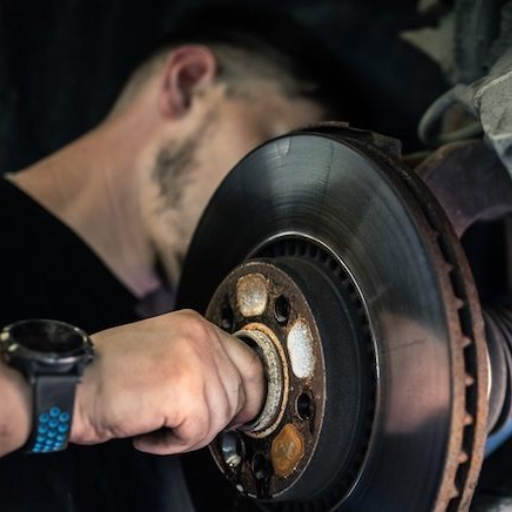
A faulty rear wheel bearing usually begins displaying signs of warning, such as noise, vibrations, and instability, among others, with an increase in either speed or wheeling sounds like humming, grinding, or growling increase as well and originate from the rear part of the car. Perturbations or wobbling of the rear wheels may also be seen along with reduced vehicle stability and imbalance in tires. Moreover, excessive play or loosening in the wheels with increase in braking distance also serves as an indicator. Overall, it is advisable to seek medical assistance as soon as possible after experiencing any of these signs to ensure further damage is not done and safety is achieved.
A grinding noise coming from the rear
In my own observations of how cars behave, a grating noise emitted from the rear will mostly be an indication of a bad rear wheel bearing. So, over time, the components of wheel bearings deteriorate because of friction and harsh temperatures. If the problem is neglected, this sound can escalate into increased stability issues and, in the worst-case scenario, wheel collapse. So I advise you not to ignore this problem and take measures such as getting it checked by a specialist or changing the bearing in order to avoid putting yourself and others at risk or causing massive damage in the future.
Wheel bearing noise while driving
I can tell you that the noise that you can hear from the wheel bearings of the car while driving is a phenomenon that should not be overlooked as it can be an indicator of more complicated matters which can aggravate with time, So What should one look into? Here’s a good start:
- What causes the noise?
The source of the noise, in most instances, can be attributed to the wheel bearing, be it damaged or worn out. The wheel bearings are situated within the hub of your wheel assembly and are specifically designed to help the wheel roll smoothly. However, over time, these bearings wear off due to friction on the wheels, lack of lubrication, or even when they are soaked with water, dirt, and other debris. These bearings get corroded and then finally refuse to function.
- How can you identify the noise?
More often than not, the sound, in dull or less dramatic terms, will resemble a grinding, humming, or growling noise and go louder as you speed the car. It can also change its tone or pitch as the steering wheel alters the direction. For instance, if the car is turned left and the driver’s side bearing is faulty, the noise decreases in pitch, whereas when turned right, the passenger side bearing takes its place and increases in pitch. But that is too simplistic of an explanation;
- What are the risks of ignoring this noise?
Ignoring wheel bearing noise can lead to consequences such as:
- Reduced Driving Control: If the bearing deteriorates, then it affects the wheel alignment as well as balance, which renders the driver with limited control.
- Uneven or excess wear on a Tire: Considerably poor conditions of the wheel will lead to the bearing deteriorating which will lead to the tire wearing unevenly or excessively.
- A wheel coming off: If a bearing is unable to function properly, then it may become extremely damaged. This is one of the numerous worst-case scenarios. The worst case outcome is a wheel coming off, which is a huge threat to safety.
- What should you do if you hear this noise?
There are two main ways to go about such a situation:
- Look into it: The first time a person hears such a noise the first option is to go to the professionals and get it checked. When mechanics are there, they will examine the bearing condition as well as the other components surrounding it.
- Require new ones: After some point, the bearing might get damaged to a point where there is nothing left to do but replace it. On a bright side though, if someone decides to go for wheel bearings replacement then spending money on them would be worth it, otherwise they might have to spend more to get them replaced.
All in all, the timely addressing of the wheel-bearing noise will not only assure your safety but will also guarantee that your car is functioning optimally. When it comes to such problems, always be sure to take a proactive approach!
How does a bad rear wheel bearing affect vehicle performance?
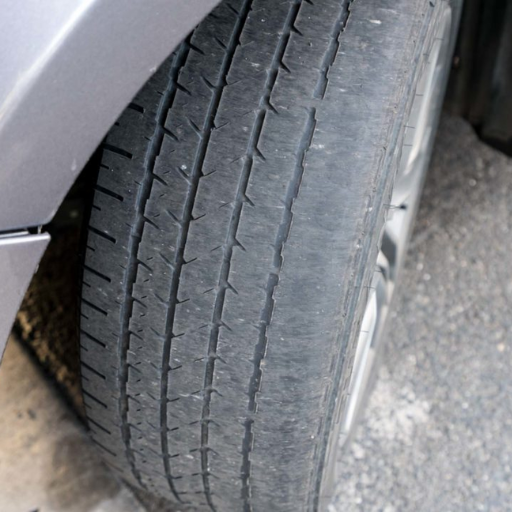
A faulty rear wheel bearing puts a lot of pressure, whether on vehicle performance, safety, or the driver himself. Here’s how it can affect various aspects in detail:
- Noise Levels: A damaged rear wheel bearing can result in strange sounds like grinding, humming, and roaring. The speed of the car affects the intensity of such sounds and the noises become louder while turning the car as the damaged bearing is put under more strain.
- Vehicle Stability: Actually, the wheel bearings ensure smooth rotation of the wheel. In their absence, the vehicle will begin to wobble or shake, making it difficult for the driver to maintain control of the vehicle. This could be a problem at any speed and greatly increase the difficulty of taking turns or requiring high speed.
- Tire Wear: Bearing failure causes imbalance and misalignment of the wheel tires, which creates uneven or all-over tire wear. The lifespan of the tire is shortened, and the cost of replacing a tire that wears out sooner rather than later is an added expense that could easily be avoided.
- Brake Performance: Defective wheel bearings do affect the braking system of the car. In this case, a badly damaged bearing can cause the rotor not to move freely or be properly positioned, which in turn reduces the efficiency of the brakes and increases the required distance for the vehicle to stop.
- Fuel Efficiency: Affecting mainly the more rarely-related wheel bearings, more rolling resistance is induced, which in turn causes an increase in the effort exerted by the engine, thus limiting the engine efficiency and, in the long term, limiting the fuel economy as well.
- Safety Concerns: If a wheel bearing fails completely, the likely result is the seizure of the wheel or the wheel being separated from the vehicle. This is a critical safety issue not only for the vehicle operator but also for the other users of the road.
Tackling a faulty rear wheel bearing in the early stages helps to ensure that such problems do not end up getting worse. Periodic maintenance and precise diagnostics are what would keep your vehicle operating at its best and, of course, safe to drive as well.
Impact on steering and handling
As I have participated in this sphere of business industry from the viewpoint of a consumer, a loose or failing rear wheel bearing can have a big impact on a car’s steering and handling. A broken bearing makes the affected wheel unstable and move eccentrically, which can be felt as transducing oscillation or pulling in the steering wheel. This can make driving, especially cornering or driving at speed, more difficult and therefore poses a safety risk. Nipping this issue in the bud aids in putting less strain on other components as well as ensuring the maneuverability and safety of the automobile on the whole.
Potential damage to other components
A neglected defective wheel bearing can affect other elements of a car. For instance, the hub assembly being under constant pressure may cause the axle or CV joints to wear out earlier than the intended period. Moreover, when the bearing fails, excessive friction and heat can also harm the brake assembly, for instance, rotors and calipers. If a damaged wheel bearing is replaced in time, these expensive repairs, plus the overall structure of a vehicle, may be safeguarded.
Safety concerns when wheel bearings go bad
one of the worst safety concerns that I come across in a failing wheel bearing is simply the failure of the wheel bearing itself. This can cause certain wheels to become loose, and this causes a compromising wobble. With such control and management, keeping things together is extremely hard, and while driving at higher speeds, it becomes a nightmare. What’s worse is when the bearing completely collapses, the friction produced is high enough to completely stop the wheel from turning, which is a serious injury hazard. At times, I’ve seen these damaged bearings also lead to misalignment in the vehicle, which subsequently worsens the control and handling of the vehicle and causes odd tire wear and tire failure. Therefore, it is important to heed the advice on consecutive wheel bearing change since it’s an expense that can be easily avoided and saves not just money but lives.
Can a bad rear wheel bearing cause the wheel to bind?
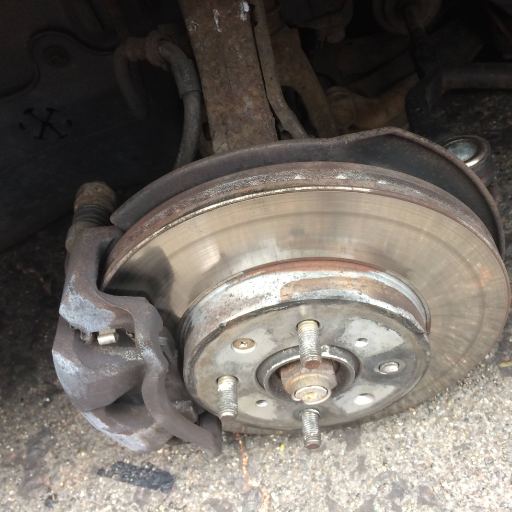
Yes, a failed rear wheel bearing can lead to the wheel locking up, and this is the result of many specific aspects. This is the reason why:
- Excessive Friction: If the wheel bearing is extensively worn out or broken, then all the rotating parts rub against each other rather excessively. This increased resistance might also result in restricting the movement of the wheel, which makes it hard for the wheel to rotate effortlessly.
- Heat Build-Up: On the other hand, a poor bearing almost always ends up being very hot owing to the heat generated due to friction. What this does is the components surrounding the bearing, such as the housing or the axle, get heated up and, as a result, suffer from thermal expansion, which further restricts the motion of the wheel.
- Physical Damage: A compromised bearing prevents the assembly from rotating when the components celebrating the two inside races, some or all the ball bearings, are markedly loose. This is especially true in harsh circumstances, such as in very extreme temperatures, as delaminating the bearing surrounding the wheels can prevent the wheels from operating as they are intended.
- Axle or Hub Misalignment: A defective bearing is known to aggravate the alignment of the hub or axle, resulting in added friction that may eventually result in the complete binding of the wheel.
So we can say that if you have a binding problem, your drivability will not be the only thing affected, and safety concerns will also rise substantially. If any symptoms of a bad bearing, such as a grinding noise, wobbling, or difficulty in rotation of the wheel, are evident, then instant attention to that part is necessary to prevent the worsening of the situation while still being able to operate your vehicle safely.
Understanding wheel bearing failure stages
I can state that the breakdown of wheel bearings ontogenetically progresses through a few distinct phases with differing alarming indicators. For example, one may notice the presence of low humming or growling sounds, which many drivers tend to ignore. This, however, is a good sign that something is not right. Eventually, these noises get worse. A subsequent vibration to the sounds, even deformation of tires,s may also be experienced over time. If the condition is left unattended, the final result would be great damage that can throng the wheel with great discomfort, or the wheel may completely detach itself, which is a choking hazard on the roads. If these signs are attended to as soon as possible, you will not only cut down on unnecessary expenditure but also be safe.
When binding occurs in severe cases
Sticking usually occurs in the most severe cases of binding, which is usually due to a catastrophic defect in the wheel bearing. This does impairment of the ability of the wheel to rotate freely, which in turn causes heat and friction to build up uncommonly or excessively. The fusion or wedging effect, when in motion, can cause the wheel to lock up, which can lead to a loss of control, which is hazardous in its own way. Hence, the component that is defective must be replaced at once so that the damage to the vessel and the likely event of an accident is averted.
Differences between binding and other symptoms
The major variation in binding has to do with how it restricts or even prevents a wheel from turning and acts as a force to be dealt with. It is not the same as generalized trailer noise that is likely a consequence a dull bearing hiss/crowth or vibration, rather more advanced bearing damage of a different order. In the same vein, while turned wheels, vibrations, and some difference in air pressure in the tires might indicate that there is a mismatched wheel or suspension part, they do not come even close to the extent and magnitude of stoppage of the wheel motion of binding. I find this part unusual yet interesting, stating that binding is one of the most troublesome signs pointing to an impending catastrophic failure of the wheel bearing, which, if reached, calls for action in the interest of the car.
How do you diagnose a bad rear wheel bearing at home?
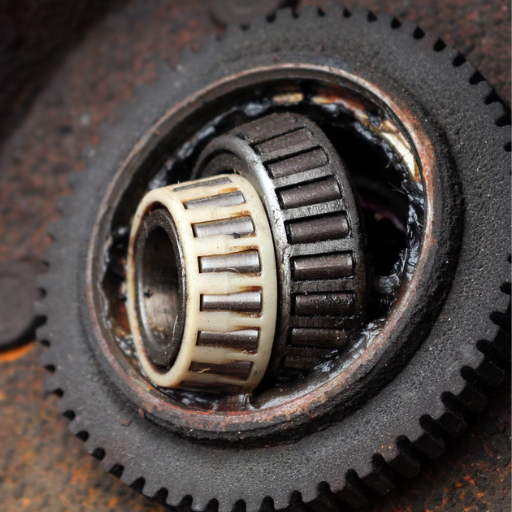
Cautiously operating and attempting to diagnose the rear wheel bearing issue in the home environment is doable, in my opinion. Some techniques are the following:
- Listen for Unusual Noises
Bearing analysis may be aided by allowing the driver to listen for unusual bearing noises such as grinding or rubbing. Such sounds may be present at an early stage and could appear in stages as the vehicle is driven. Drive in a fairly silent place, maintain a constant speed, and turn your attention to the area closer to the rear axle. If there’s a distinct ‘pop’ sound when the car weight shifts during cornering, increasing it on one side indicates that the respective bearing is failing.
- Perform a Visual Inspection
Begin by ensuring that there is no load on the suspension. One rear wheel should be powered off as you groom the other side of the suspension. Keep your eye on the wheel hub area. Once again, any damage around the bearing housing and rusting should be noted. Also, the leakage of grease, as well as the accumulation of dirt, could point to the fact that the seal is brittle.
- Check for Wheel Play or Looseness
Hold the rear wheel, putting your hands on top, and the bottom of it cordially, then gently twist the rear wheel with your two hands in a rocking manner. Looseness or excessive movement is a sign of a faulty wheel bearing. After that, gently move the wheel to the right and to the left while checking and trying to feel any unusual “free play” in the motion. When the bearing performs its function adequately, the wheel must be rigid and steady without any display of wobble.
- Spin the Wheel Manually
If the rear wheel that has been lifted is spun with someone’s hand, have close monitoring for any sound of scraping or grinding. There are no restrictions; therefore, it is a free-spinning wheel that displays an optimal condition, but when the motion feels rough and unusual sounds are produced, the bearing must be the reason.
- Feel for Vibration
If your vehicle has the propensity to vibrate or tends to “wobble” on most of its trips, then whilst on the road, there is a high probability that a faulty bearing on the wheels is mounted. Although these vibrations can be due to other factors, such as the tires and the alignment, they are worsened by a faulty bearing on the wheels. If it is searched in conjunction with other pleasure activities at home, then there is higher accuracy in finding where the problem lies and carrying out the entire exercise.
- Inspect Tire Wear
Uneven wear patterns on the rear tires in a vertical plane might be caused by defective bearings. See if the tread is wearing down on a certain side more than the other side or rather considerably faster. That being said, there are other reasons as well, but it is usually a sign of bearing-related issues.
Surely, if these steps arouse your suspicion of a faulty rear wheel bearing then I highly recommend you to deal with it as soon as you can. Loss of such a bearing will not only load other components but also greatly impair the safety and handling of your machine. If you feel that you have doubts anywhere, it is good to consult an expert.
Jack up the car and inspect the wheel.
With a great deal of axle-bearing experience in mind, the first procedure I do is to firmly lift the surface of the entire automobile. Make sure that the vehicle is on a level and even surface and this can be supplemented with jack stands – this is very important and truly cannot be overemphasized. When the wheel has been lifted off the ground, grabbing firmly around the clock positions of 12 and 6 o’clock, try to rock the wheel backward and forward. A high degree of movement and a clicking noise is a good sign of a worn bearing and needs replacement. Afterward, with a clean hand, try rotating the wheel by hand – there should be no roughness. A good bearing will not make excessive noise during rotation. Such a simple check can reveal so much about the condition of the bearing and help determine whether it requires repair or not.
Checking for play in the wheel hub
Excessive movement most likely implies that the bearing has failed, which may risk the safety and performance of the vehicle. If any movement is detected during the 12 and 6 o’clock test or any grating sound over the spinning of the wheel occurs, then such bearing has to be replaced immediately. Failure to do so would lead to more damage of the adjacent parts and, performance decreases, and more parts are at risk of damage.
Listening for unusual noises while rotating the wheel
strange sounds like grinding, growling, or humming while the wheel is spinning tend to suggest a defective wheel bearing. This usually occurs due to wear and tear or because of damage to the bearing’s inner parts. Resting an ear against the hub to check the bearing’s condition is a trick I always perform when inspecting wheels, of course, only in quiet places. Definitely, I will not forget to mention that the whine is likely to get louder as the truck increases in speed or as the load on the wheel increases. Taking these early warning signs is of utmost importance as it will cut down any chances of high-cost repairs thereafter and will also make the vehicle safe for operation.
When should I replace a rear wheel bearing?
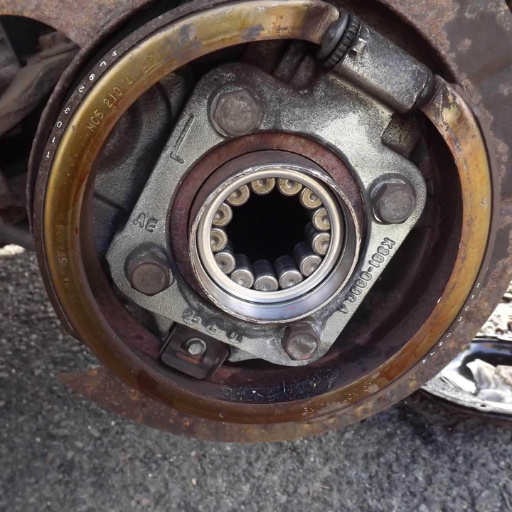
A rear wheel bearing is a part of a car axle and must be serviceable once an individual observes rough grinding or any wear and tear, indication of wheel bearing growing loose along with uneven wear of tires. Neglecting the above-touched aspects may surely lead to a horrifying wheel failure for the driver; hence, proper wheel inspections are key to stability. Furthermore, the audience must approve of vehicle manufacturers’ recommendations for some bearings that do come with a service mileage or life limit. Timely outreach is also important for safety purposes and ensuring other components are not damaged.
Signs of premature wheel bearing failure
An early fault in the wheel bearings has many recognizable signs of decaying surfaces above outer rings, separating loose components with increased radial play or excessive growing noises. Unusual noises such as grinding, clicking, or humming occur too and are amplified with the sudden increase in speed and while making turns. The driver may also feel abnormal vibrations in the steering wheel, get rods with abnormal wear patterns, or feel decreased stiffness while driving. More than two conditions are supposed to exist, like increased temperature at the wheel hub, warning of ANTI LOCK steering malfunction, or warning of OUT OF SERVICE indicator, which may also imply faulty bearings. These symptoms are to be considered in advance as they facilitate a wide range of issues and increase the vehicle’s safety.
Importance of timely replacement
In my opinion, regular maintenance, like replacing worn-out wheel bearings, is essential for both the safety of the passenger and that of the vehicle as well. Failing to heed such warning signs can cause further damage to parts like the suspension or the axle, which can be costly to fix. Besides the mechanical hazards, deteriorating wheel bearings can pose a threat to the ability to steer and stop the car, which increases the risk of crashes. If the problem is dealt with at an early stag,e the driver not only is helping the vehicle but also himself for an enjoyable drive.
Replacing wheel bearings in pairs
On every car, I would always say to change out the wheel bearings in pairs, and the reason behind it is this. If one wheel bearing fails, then most likely, the other one won’t last long since they suffered through the same driving conditions and similar wear and tear. It’s preventative maintenance that ends up in better time management, less labor cost, and fewer problems in the future.
- Even Wear and Tear: The wheel bearings of both axles experience identical wear and tear. If one is on the brink of collapse, this means the other has already been exposed to the same conditions and will fail sooner than later. As a preventative measure so that such a situation doesn’t occur in the future, it is prudent to get the bearings replaced during the same visit.
- Balanced Performance: Sometimes, when old and new bearings are used on the same axle, there can be a misalignment. This can be particularly troublesome when one is traveling at high speeds. When you do it in pairs, that seam between the normal and the not-so-normal disappears, and so does the difference in driving experience.
- Cost Effectiveness: This is most surprising because bearing change in pairs is more economical because this reduces overall expenses. Damage to the bearings does make the mechanic charge a fair amount, but doing them all at once also makes him adjust the charge accordingly, thus decreasing your expenses in the end.
- Safety: Once the wheel bearings start to wear and tear or overuse, one starts to lose control of the vehicle, and it can be risky. This is the main reason behind the choking of the bearings. This is exactly when swapping both bearings comes in handy, as it still manages to keep your vehicle in its best shape.
As a rule, it is always good to deal with such matters from a global perspective, not in parts, and even such minor detail as replacing wheel bearings with pairs bears significance.
What’s involved in replacing a rear wheel bearing?
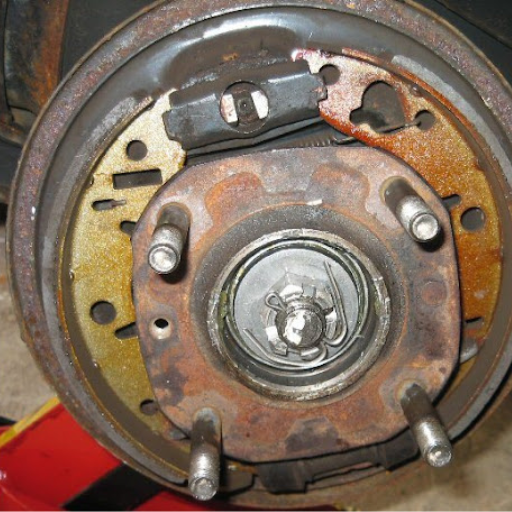
As an experienced professional in rear wheel bearing replacement, I can tell you that it is a time-consuming and careful undertaking. There are, however, steps which, when taken, make the process much easier. In the first step, the vehicle is lifted, and the right support is given so that the wheelhouse is free. Next, the wheel and the brake pieces for this assembly are taken out, revealing the hub assembly. The hub and the bearing assembly are now separated with the use of proper hand tools, as allowing force is inadvisable. This is because force might lead to breakage of some of the parts. Then, bearing parts are removed, and new parts are installed and turned until the manufacturer-specified torque is reached. Afterward, brakes and wheel components are assembled back with the aim of checking and seeing if everything is smooth while in use. Joint efforts seem to be the most adequate approach in this case, as the last thing that one needs is either safety or efficiency problems caused by the negligence of steps during the whole process.
Steps to Remove and Install a New Bearing
Being in the business of auto repair for several years now, I can say that replacing a wheel bearing does not really require any complex procedures if one actually knows how to break it into simpler tasks and works in an orderly manner. This is how I would tackle it:
- Prepare the Work Area: Begin by ensuring that the vehicle is parked on an appropriate even surface, removing the parking brake. Loosen the lug nuts on the afflicted wheel, but leave them in position for the next step.
- Lift the Vehicle: Use a hydraulic floor Jack to help raise the vehicle up, and to keep it in place, install the appropriate jack stand. Be sure to check that the vehicle is stable.
- Remove the Wheel: With the help of manpower, unscrew the lug nuts and take the wheel off using a hub socket and a center.
- Detach the Brake Components: Begin with the removal of the fasteners of the brake caliper, then move on to strap the upper point to KH at the lower point with a wire. Try your utmost to restrain the brake line from supporting the weight of the caliper. If it obstructs the goal, take off the brake rotor.
- Remove the Hub Assembly: If all of that has been done and still not gotten off the hub assembly, do read this step. Start by taking off the bolt(s) from the axle nut or use pliers to take off any wire retention clips or washers to keep all of that in place, then suicide to disintegrate the hinging with the aid of a pulling mechanism.
- Extract the Old Bearing: A pulling mechanism may be needed for some vehicles with pressed-in bearings; if attempting such progress is critical, use only a bearing press. Try to be a causation to trouble exclusively bent on the minimum area.
- Clean the Area: Be sure to spend time cleaning the area around the hub, especially where the old bearing was placed, to avoid any dirt, rust, and debris.
- Install the New Bearing: The new bearing needs to be inserted into the bearing housing with the help of a bearing press. All parts should be installed accurately.
- Reassemble the Hub: After receiving the hub assembly back, attach it, honing in on bolts and axle nuts tightness to the specification in the manufacturer’s guidelines.
- Reinstall Brake Components: The caliper and brake rotor have to be put back on gently. Make sure everything is solidly in place before proceeding onward.
- Mount the Wheel: The lugs need to be removed to a greater extent, the wheel needs to be placed on the hub afterward, and it needs to be secured back in place by tightening the lugs with the fingers. The vehicle should be brought down from the jack after these steps are done.
- Tighten the Lug Nuts: To ensure equal pressure on the vehicle’s wheels, the rest of the lugs should be done in a star-like pattern after the car is back on a solid floor.
That’s it, now we got that your wheel bearing is replaced which means your vehicle can be used again. Small repairs such as the one you’re describing can be done quickly and as efficiently as possible, given that the person in charge is very focused and thorough. If you are in doubt at any point during this process, do not hesitate to look at the manufacturer’s instructions or call in an expert. In an achieving attitude, practice will make one confident!
When to seek professional help from a mechanic
When you are trying to remove parts, and they seem to be too tight, or you’re missing the tools you need, and there’s also quite a lot of damage that extends beyond the wheel bearing, that’s your cue to seek professional assistance. Furthermore, if after replacement, the sounds are still out of the ordinary, or if the ride doesn’t feel right, have a specialist take a look so that any potential hazards can be dealt with upfront.
How can I prevent rear wheel bearings from going bad prematurely?
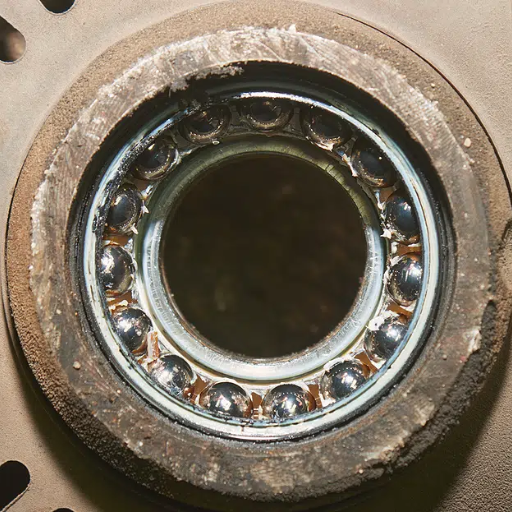
Taking care of precision installations is the easiest way to ensure that the rear bearings of wheels do not fail at an early age. Never make a faulty installation of wheel bearings where you would load them with insufficient grease. Always keep an eye on the seals and replace them when they are at risk of wear and exposure. Steer clear of deep and muddy water so that seals do not get breached and contaminants do not get into the bearings. Also make it standard procedure to examine the conditions of the wheels for abnormal movement or noise especially during service checks, this avoids expensive repairs in the future. Believe it, all it takes is investment time to greatly improve the service life of your rear wheels’ bearing.
Proper maintenance and inspection routines
Implementing wheel bearing maintenance techniques and regularly checking the wheel bearings make a vital difference. For my practice, I’ve seen that having a specific time to check the wheel bearing is crucial in routine maintenance. Otherwise, it could be inefficient or never completed, which would severely reduce consistency. Routine maintenance schedules should, preferably, include removal and inspection of all four bearings at an interval of about 15.000 to 30.000 miles or or every set of servicing. Cleaning the hub area that surrounds the bearings helps to keep dirt and grit from collecting and working their way into the bearings over time. While driving or experiencing wear and tear, listen for unusual sounds, like grinding or humming, since these are most likely indications of something amiss. Completing regular inspections not only ensures safety but also prolongs the lifespan of the rear wheel bearings.
Importance of correct wheel bearing torque
Bearings are staring at me when I see vehicles’ performance, stressing the need for optimal screw pressure. Overtightening the screws can produce excessive friction that would impose heat, leading to rapid wear and tear, whilst failing to get the right torque can nullify stability, creating wars into slacks. That said, an appropriate adjustment during the fitting or servicing process is key. Make sure to obtain the manufacturer’s specifications regarding the screw torque, as they are predetermined or too specific to the car model. A calibrated torque wrench adds the necessary muscle when fighting accuracy and avoiding usual blunders. In any circumstance, however, don’t be lazy in doing this as it will save you billions in repairs while letting your wheel bearings operate normally for a lasting time.
Reference
- Tacoma World: How Do You Know If Your Rear Wheel Bearings Are Bad?
- Reddit: Diagnosing which wheel bearing is going bad?
- MG Experience: What are the symptoms of bad rear wheel bearings?
Frequently Asked Questions (FAQs)
Q: How can I tell if my rear wheel bearing is going bad?
A: Common signs of a failing rear wheel bearing include a grinding or humming noise that changes with vehicle speed, vibration in the steering wheel or floorboard, and uneven tire wear. The noise may be more noticeable when turning right or left, depending on which rear bearing is affected.
Q: When does a bad rear wheel bearing start to bind?
A: A rear wheel bearing typically starts to bind in its later stages of failure. You might notice increased resistance when rotating the wheel, especially if you jack the car up and spin the affected wheel. In severe cases, the wheel may feel noticeably tighter or even lock up completely.
Q: How can I differentiate between a bad front wheel bearing and a rear wheel bearing?
A: While symptoms can be similar, a bad front wheel bearing often causes more noticeable steering wheel vibration and may affect handling more significantly. Rear wheel bearings usually create a more consistent humming noise. To pinpoint the location, try shifting your weight in the vehicle or making gentle turns to see if the noise changes.
Q: Is it safe to drive with a bad rear wheel bearing?
A: It’s not safe to drive long distances with a bad rear wheel bearing. As the bearing deteriorates, you risk losing a wheel, which can lead to a serious accident. If you suspect a bad bearing, have it inspected and replaced as soon as possible to avoid potentially catastrophic failure.
Q: How long do rear wheel bearings usually last?
A: Rear wheel bearings can last anywhere from 80,000 to 150,000 miles, depending on driving conditions and vehicle maintenance. However, some drivers have seen many bearings last much longer, especially if they’re original to the vehicle. Regular inspections can help catch issues before they become severe.
Q: Can a bad rear wheel bearing affect my brake pads?
A: Yes, a failing rear wheel bearing can indirectly affect your brake pads. The increased play in the bearing can cause uneven brake pad wear, leading to premature replacement. Additionally, the heat generated by a failing bearing can transfer to the brake system, potentially causing brake issues.
Q: How can I check my rear wheel bearings at home?
A: To check your rear wheel bearings at home, jack the car up and support it safely. Try to wiggle the wheel at the 12 and 6 o’clock positions. Any noticeable play could indicate a bad bearing. Also, spin the wheel and listen for any grinding or roughness. Please enable JavaScript and take all necessary safety precautions when performing these checks.
Q: Are rear wheel bearings different for front-wheel drive, rear-wheel drive, and all-wheel drive vehicles?
A: Yes, rear wheel bearings can differ based on the drive system. Rear-wheel drive and some all-wheel drive vehicles often use more robust roller bearings or bearing and hub assemblies. Front-wheel drive vehicles typically have simpler rear bearings. Always consult your vehicle’s manual or a professional to ensure you’re dealing with the correct type of bearing.
